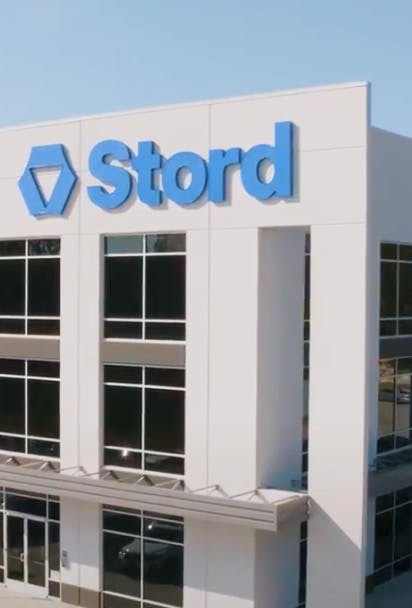November 19, 2020
The Omnichannel Experience
The omnichannel supply chain supports the orders of everyone, from someone purchasing a new holiday-themed collar for their cat directly through your website, to the VP of Procurement at a big-box retailer who wants four types of holiday-themed collars to sell in their Southeast region stores and 10 types to be available for purchase nationwide on their website. A successful omnichannel distribution strategy ensures that enough of the right inventory is located near each type of customer, for each channel, so they have a seamless purchase or delivery experience, without losing margin by overpaying on warehousing and distribution.
What is Omnichannel Distribution?
Omnichannel distribution is the integrated approach to selling across any channel, offering buying opportunities in stores and online with various delivery methods. Stock levels, transportation logistics, and demand forecasting need to be in sync across all of these sales channels in order to avoid a distribution network rife with late deliveries, empty shelves and unsold inventory.
The Opportunity for Omnichannel Companies
Supply chains are complex, being difficult to master and impossible to perfect, but even more so when they’re supporting omnichannel sales. Demand will vary per channel, and you will need to prepare your supply chain accordingly. Where people shop depends on factors like age and region, so you might have one product that appeals to Generation Z sell well on your online branded store, but when you start selling it on Instagram, orders triple. If you open up multiple channels at once without anticipating demand, you’ll risk running into stockouts
Setting up your omnichannel network may take some additional preparation, but you stand to reap some big rewards:
91% greater year-over-year customer retention rates compared to business who sell on a single channel
190% more in revenue compared to single-channel businesses
Customers with a 30% higher lifetime value than those who shop on one channel
However, in order to see the benefits from an omnichannel strategy, you need to prepare for its challenges.
Challenges to Succeeding in Omnichannel
Inventory shortages - An out of stock item is a missed sale. 27% of consumers say they’re very likely to leave and visit another retailer’s store if the product they’re looking for is out of stock, with 21% likely to buy online from a different retailer and 21% holding off on a purchase altogether.
Logistics costs - The cost of setting up and maintaining warehouses and transportation lanes to support an omnichannel strategy may seem like a deterrent. An efficient set-up -- storing goods near customers, storing the optimal amount of inventory and optimizing freight routes, will actually end up costing around the same as a well-designed single-channel operation would, because you’re using the same warehousing and freight resources.
Multiple distribution methods - Customers expect to receive purchases on their terms. For example, 50% of shoppers expect they will be able to make a purchase online and pick it up in store, and retailers expect their OTIF requirements to be met.
Lack of visibility across channels - Channels may include brick-and-mortar retail stores, e-commerce sites and social media marketplaces. Visibility across all of them is key to understanding how demand varies per channel, and to ensuring that fulfillment and delivery KPIs are being met, so that each customer has an optimal buying experience. Customers also want visibility into stock before they buy -- 73% of consumers said they are likely to visit a local store if the retailer provides in-store product availability information online, compared with 36% of customers who would visit a store if no online inventory information was available.
Varying distribution velocity - Products sell at different rates depending on the season, the type of customer, and the type of delivery. Managing distribution velocity well is key to keeping warehousing and transportation costs low, while meeting customers’ high delivery expectations.
Omnichannel Distribution Success Checklist
To reduce complexity in your supply chain and build a unified experience for both your customers and your team, you’ll need:
Effective, full-service 3PLs
Optimized inventory positioning
An Inventory Management System
An integrated and omnichannel Order Management System
Optimized freight and parcel routes
These items will also allow you to optimize on costs and give you the agility to enter new markets and start selling via new channels quickly. Read on to learn how to source and implement these keys to success.
How to set up your distribution and fulfillment facilities
Omnichannel distribution requires a more distributed footprint. You’re shipping items to fulfillment centers and distribution centers to store items closer to customers all over the country, with the possibility of additional storage needs in safety stock or forward stocking locations. Instead of investing in your own distribution buildings that take years to set up and are expensive to build and maintain, partner with high-quality third-party logistics providers instead. Working with a 3PL means you only pay for as much space as you need, in some cases with the ability to fluctuate capacity with your peak and off seasons. If you need to move out of a market for whatever reason, you can set up in another facility in a different area much more easily than you could if you owned and operated the warehouse yourself.
However, there are two things to keep in mind when partnering with individual third-party logistics providers: (1) that many do require a long contract, so you will need to be prepared to stick around for a few years, and pay additional fees on move-out. (2) if you’re selling to both businesses and consumers, the same facility may not be able to handle both kinds of fulfillment, because they each require different sets of expertise and warehouse layouts. If you’re looking for B2B and B2C fulfillment in the same region, you may have to stand up two facilities, unless you partner with an omnichannel 3PL.
Next take a look at the inventory you’re storing in each facility. How much opportunity is there to minimize holding costs, while leaving enough to avoid a stockout? Evaluate your shipment and inventory data to identify what the high-demand and low-demand SKUs are in each region, and adjust stock levels accordingly in each facility. If you’re thinking this is easier said than done, you’re probably working out of siloed information systems. The key to a well-functioning omnichannel supply chain is visibility, so make sure you’re using an Inventory Management Software. An IMS tracks inventory levels, orders, sales and deliveries, so you have one view of inventory data instead of combing through emails and spreadsheets. It helps ensure that your inventory counts are accurate, for both demand planning and accounting purposes. Ideally your system is easily integrated into your other enterprise systems, so you’re using one software to view all data from an end-to-end integration. From here you can see how turnover differs for each product across regions, and adjust inventory-on-hand accordingly.
How to avoid losing a customer with “out of stock” when they go to make a purchase
Now you’ve looked at the data and optimized the inventory in your warehouses to maintain a healthy turnover and avoid spending too much on capacity. But completing an end-to-end integration wasn’t just for the data. It’s also to ensure inventory counts are being updated in real time, across all of your distribution network, as new purchases are being made through all your sales channels. Customers shop in real time, all the time, so an update from your e-commerce platform that’s sent to your ERP that’s emailed to the nearby warehouse to indicate how many SKUs need to now be allocated for shipping won’t be fast enough to give you an accurate picture of stock levels. Real-time visibility made possible by connected systems will enable you to act quickly to send truckloads to the distribution or fulfillment center that’s running low. This visibility will also help you determine whether you need to consider additional safety stock locations nearby.
For in-store shoppers, maintaining a high retailer compliance score will be key to increasing your products’ on-shelf availability. If your product is out of stock in a retail store, you’ve either disappointed a customer who came in looking for your product so they’re leaving unhappy or with a competitor’s item, or you’ve missed the opportunity to turn a casual browser into a loyal customer.
How to ensure you maintain a high vendor scorecard when selling to wholesalers and retailers
Maximize your success with retailers and keep your goods stocked on their shelves by maintaining a high vendor scorecard. This means that your shipments arrive on time, as they’ve been ordered and without damage. Otherwise you may be subject to fees, like the 3% of total value of goods fee Walmart recently started charging its suppliers, or you may risk losing your relationship with a retailer altogether.
The distribution centers you’re using to fill retailer orders need to be true partners to your supply chain, willing to be held accountable to the metrics and standard operating procedures that you design. Find a logistics partner with a demonstrated history of meeting KPIs for fast lead times and low damage and loss rates. You’ll also need a trusted transportation partner to pick up and deliver shipments to the customers once they’re ready, which is why we’re talking about on-time, accurate, yet cost-effective delivery next.
How to minimize transportation costs while delivering shipments on-time, accurately and without damage
There are a variety of strategies to reduce freight costs, but we’ll focus on two key ways that may require changes to your network: route optimization and accessorial fee reduction.
Reduce waste in your transportation lanes as much as possible. Look at your shipping data and evaluate where two lanes might be consolidated, or even where one lane needs to be split into two to avoid a longer route and the cost of offloading a shipment. Keep in mind that you want to reduce cost, but not at the expense of the customer. Store inventory close to customers, both to speed up delivery times, but also to reduce the chance of damage or loss. The fewer hands a shipment has to pass through, the smaller its chance of damage or loss.
Again if you don’t have that shipment data available already, look to integrate your transportation management platform with your ERP, or even better, find an end-to-end integration solution. If a shipment does get lost, or some other error is made, it’s much easier to find the mistake and resolve it when you have all relevant information available in one place. You can also use the centralized data and documents to examine where you’re being billed unnecessarily. Some freight invoices tend to be padded with unexpected rates or charges -- consider using a transportation partner who will pre-audit invoices from carriers, reducing manual effort on the part of your finance team.
Ready to get started?
Talk to one of our cloud supply chain experts about your plans to sell everywhere your customers are.
Get started: https://www.stord.com/get-started




